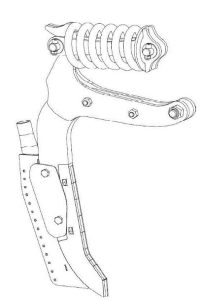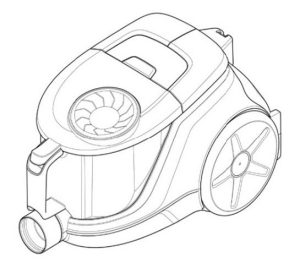
It is widely recognised that a robust IP strategy, tailored to a company’s needs, can be critical to business success. As such, many companies have developed sophisticated trade mark and patent portfolios to protect their brands and innovations. However, a sizeable number lack an IP strategy that makes full use of design protection.
Since the UK left the European Union, and the landscape for design protection in Europe changed to include more restrictions on automatic unregistered rights, many companies have looked to optimise their IP strategy to better protect their products in Europe. This article sets out some reasons why you may wish to consider making more use of registered designs.

European Union Design Registration No. 006852687-
0001
What do registered designs cover?
Registered designs can protect the shape or appearance of virtually any product. In many cases, designs relate to the 3D appearance of the whole or part of a product, but designs can also relate to two-dimensional articles, such as logos, and changeable display features, such as graphical user interfaces.
Why file designs in addition to patents?
By filing design registrations, your products can be protected sooner (within weeks rather than years) and for longer (25 years rather than 20 years). But, fundamentally, designs provide your product with a different kind of protection, giving you more tools to defend yourself against companies that would try to imitate your products.
Whereas patents protect the functionality of a product, registered designs can help to protect against products with the same appearance as yours, but which may have engineered their functionality to work around your patents. Even for products where protection for functionality is vastly more important than for appearance, the existence of competing products that are visually indistinguishable from your own, e.g. by online copycats, can cause headaches and weaken your product’s identity and reputation in the marketplace. In this sense, registered designs can provide a strong supporting role to patents, to help ensure competitors’ products must look and work differently than your own.

Why file designs in addition to trade marks?
Trade marks identify the commercial source of a product, typically via names, logos and symbols forming the branding of a product. However, trade marks generally have much more limited effect in preventing competitors from selling products that look similar but without being branded so as to cause confusion as to commercial origin. Registered designs can bridge this gap by protecting the appearance of the product itself, regardless of how it is branded. Moreover, designs can also be used to protect key elements of branding and get-up, even where these would not be distinctive enough alone for trade mark protection. Registering the design of important aspects of your product’s packaging or branding will provide exclusive use of anything generating the same overall impression, and this exclusivity in appearance can help your products to better stand out in the market place. Furthermore, designs are not limited to certain classes of goods or services, and there is no use requirement for designs in the UK and Europe, as there is for trade marks.

Design Registration No. RCD 003403054-0001
How much does a design registration cost?
A design application is relatively simple, being mainly defined by the drawings, and as such is usually less expensive than a trade mark application and much less expensive than a patent application. Designs are also not substantively examined on registration, meaning that no discussion of the design’s validity is required until and unless they become the subject of litigation.
When must a design registration be filed?
Many countries require that the design registration is filed before the design which it is to protect has been disclosed to the public (e.g. put on sale). However, UK, German and EU design law provides a 12-month grace period, meaning that in these territories you can still apply for design protection after you have disclosed your product, provided the application is filed within a year of the first disclosure. Therefore, it is important to act quickly.

No. 6005968
To sum up
Design registrations are a relatively inexpensive way to strengthen an existing IP strategy, complementing parallel patent and trade mark protection of your products. GJE can prepare and file design applications for you in the UK, Germany and the EU, as well as coordinate global design filing strategies. If you would like to discuss your design filing strategy, please find the author’s contact details here and here, or contact our designs team at gje@gje.com.





